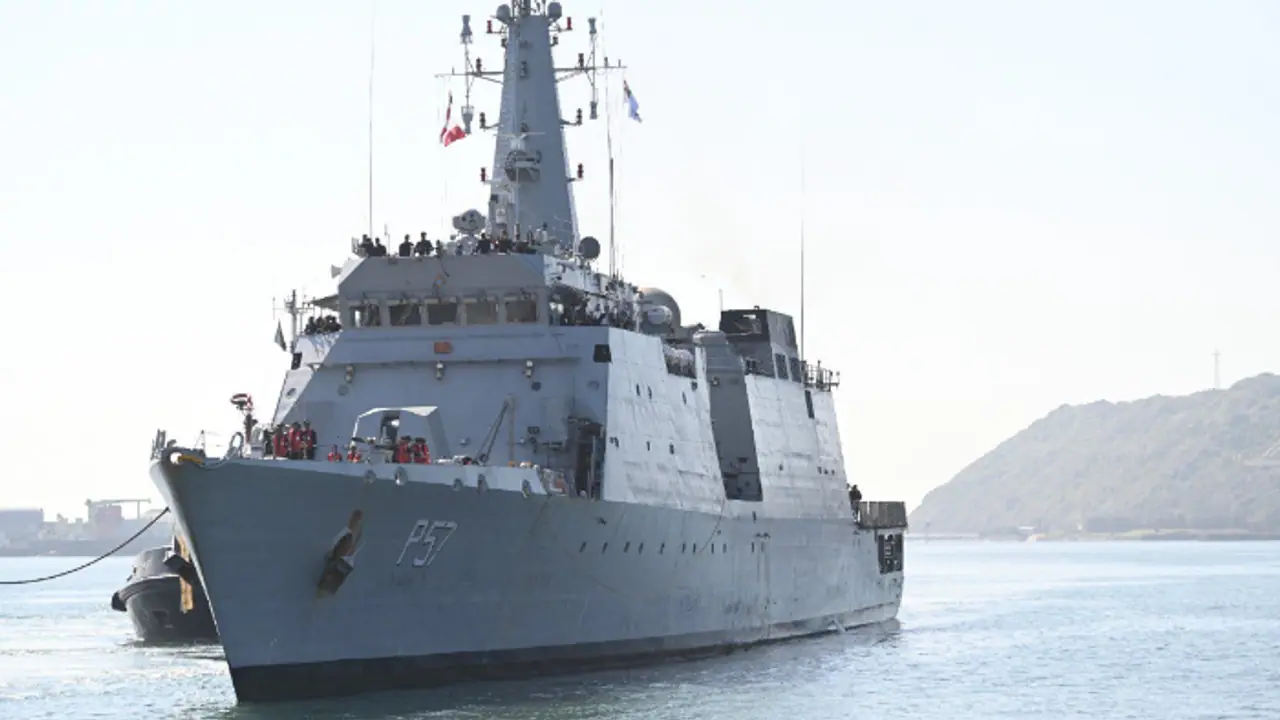Indian Navy asserts dominance through quiet strength, leveraging strategic deployments, live-fire drills, and global partnerships. Subtle maritime actions from bases like Karwar reinforce deterrence, signaling regional leadership without provocation.
New Delhi: There was only a brief moment in the India-Pakistan tensions when attention turned seaward. Warships manoeuvring through the Arabian Sea and conducting anti-ship missile tests just days after the Pahalgam attack provided a clear demonstration of India's maritime power.

While eyeballs quickly became glued to developments in New Delhi and the situation along the Line of Control, the Indian Navy's maritime deterrence strategy was subtle, sophisticated, and steady.
Silent Guardians at Sea
In the days following the April 22 attack, the Indian Navy stepped up operational activity in the Arabian Sea without aggressive posturing.
Multiple surface combatants, including frontline destroyers and frigates, were deployed for live-fire drills involving anti-ship and air defence scenarios.
These activities were accompanied by formal NAVAREA warnings issued by the Directorate General of Shipping, alerting commercial vessels to avoid specific zones due to missile testing and naval manoeuvres. The affair was kept quiet enough for it to not have made headlines in mainstream media had it not been for the warning.
Routine missile testing was also part of the Navy’s activity during this period. While the platforms and payloads were not publicly confirmed, it is understood that the Navy conducted BrahMos supersonic cruise missile drills aimed at simulating hostile naval targets.
On May 3, the Navy published an image showing three critical elements of its maritime power: the destroyer INS Kolkata at sea, a Dhruv Advanced Light Helicopter in flight, and a Kalvari-class submarine submerged with the caption, "Above, Below and Across Waves".
The actions of the Indian Navy did not resort to belligerent signalling but still reaffirmed to the nation who the resident power of the Indian Ocean is.
Chief of Naval Staff Admiral Dinesh K Tripathi also met Prime Minister Narendra Modi in New Delhi to provide an assessment of maritime developments.
Karwar Naval Base: Anchor of Quiet Supremacy
Central to India’s Arabian Sea strategy is INS Kadamba, better known as the Karwar Naval Base, India's largest naval facility east of the Suez Canal. Home to both aircraft carrier groups — INS Vikrant and INS Vikramaditya — Karwar ensures rapid deployment and strategic flexibility.
Advanced infrastructure at Karwar, from sophisticated shiplift systems to protected docking facilities, enables seamless operational readiness. With ongoing expansions under Project Seabird set to transform Karwar into Asia's largest naval base, the facility definitively shows India's maritime strength.
Maintaining Global Support
Strategic chokepoints like the Strait of Malacca, Persian Gulf, Gulf of Aden, Bab-el-Mandeb, Mozambique Channel, and Sunda and Lombok Straits have become theatres where the Indian Navy maintains constant, understated vigilance.
These deployments are part of the Navy's carefully orchestrated Mission-Based Deployments (MBD), ensuring silent monitoring of critical sea lanes that support the global economy without provoking alarm.
Naval Exercises: Quiet Diplomacy at Work
India’s strategic exercises— Malabar, Varuna, SLINEX, and Milan — further enable the Navy to augment its strengths. The Malabar exercises take place with QUAD nations (the US, Japan, and Australia).
Exercise Varuna 2025 happened in partnership with France, while SLINEX was undertaken with Sri Lanka. Multinational Milan drills further highlighted quiet diplomacy, subtly positioning India as the region’s stabilising maritime power.
In a geopolitically volatile region, international alliances and their diplomatic backing are crucial deterrents.
The Strategic Wisdom of Silence
Strategic analysts widely support India's subtle naval approach. The Observer Research Foundation (ORF) and international think tanks like the Lowy Institute emphasize that India's maritime strategy of persistent but non-provocative deployments prevents potential escalation and fosters long-term regional stability.
Indeed, aggressive sea control and overt demonstrations often provoke more pushback than respect. India's quieter presence earns strategic legitimacy, maintaining stability without compromising credibility.


